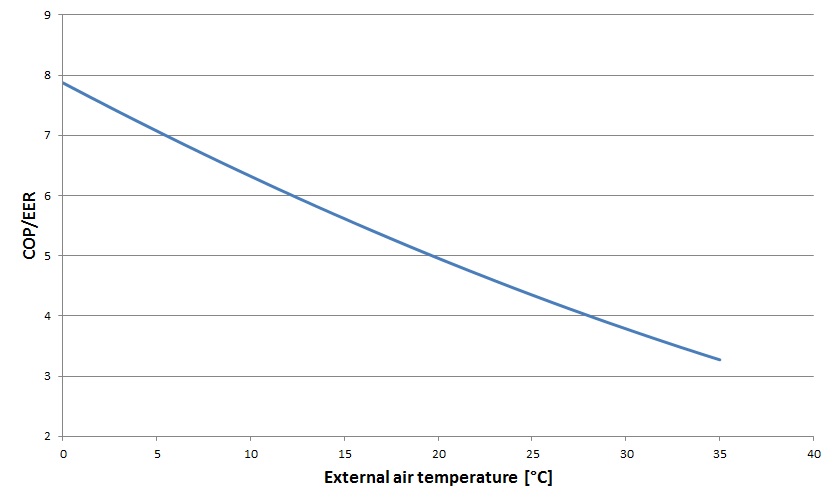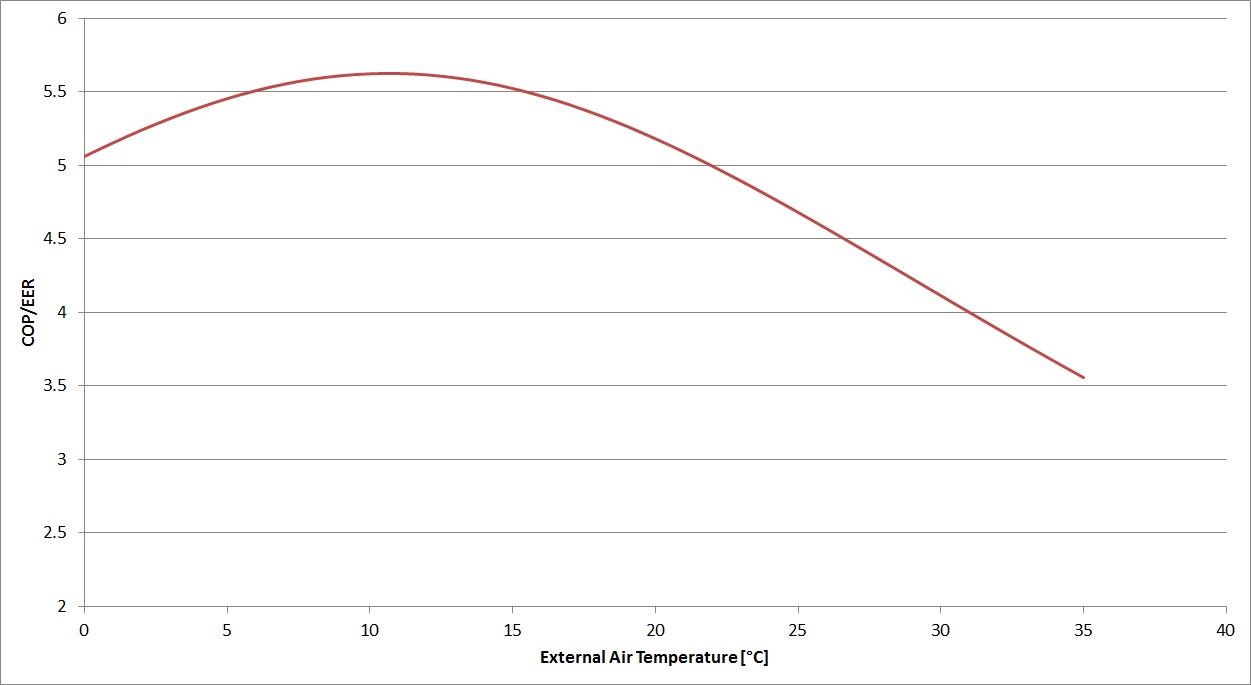Dear all,
I am developing a simplified model of an air-to-water reversible heat pump in Modelica. The model is based on a curve-fitting approach for the calculation of the COP with data retrieved from the technical documentation of a heat pump unit. The COP is a function of evaporator and condenser temperatures. I am using a bi-quadratic function (as EnergyPlus does for example for chiller models)
My doubt refers to the cooling mode. In particular, I can't understand what exactly happens to the COP of the machine when the outside air temperature (temperature entering the condenser) goes below the water temperature (temperature leaving the evaporator). This situation can happen for example when a building needs cooling during a cold day.
Depending on the set of data that I use for the curve-fitting approach, I found two different behaviors: in graph1, the COP continuously increases C:\fakepath\graph1.jpg. In graph2 the COP reaches a maximum approximately in correspondence with the value of the water temperature (it was 14 °C in this case) C:\fakepath\graph2.jpg
Theoretically, whenever the outside air is lower than the water temperature, almost 100% free cooling could be achieved, however I am not really sure about the reality.
I hope you have some comments about this. Thanks,
Alessandro



 .
. 


